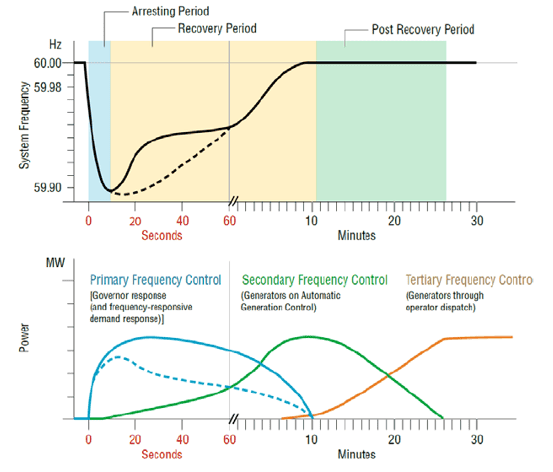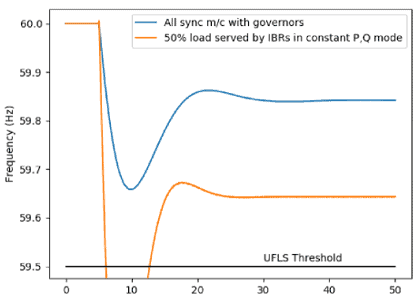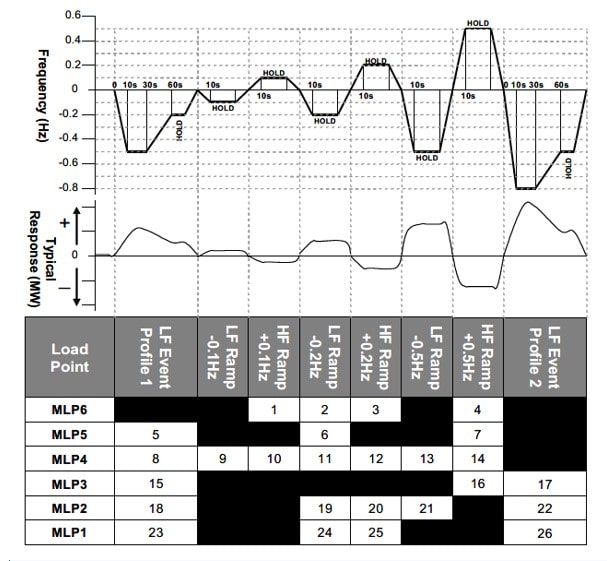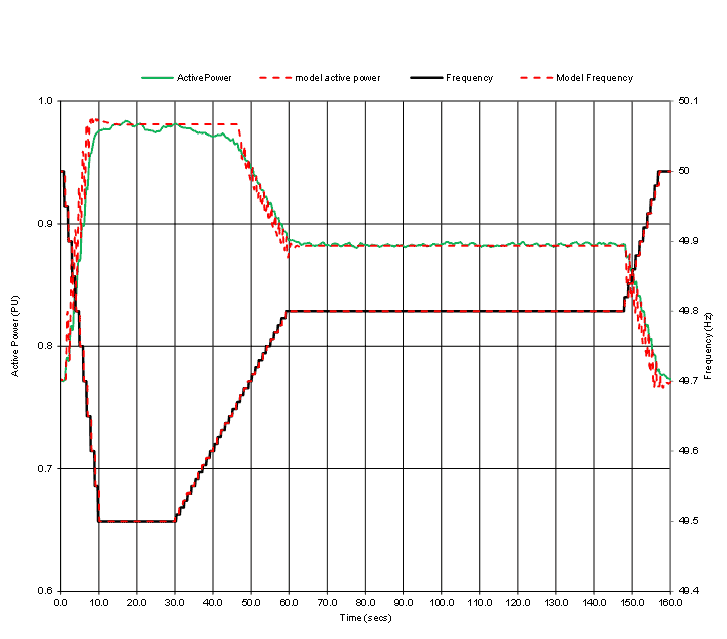

Shahab Khan & Kevin Smethurst
In this series of short technical articles, we look at various topics that illustrate the complexity of renewables as a concept within the ongoing energy transition. Here, PSC’s Kevin Smethurst and Shahab Khan looks at frequency response services, requirements and opportunities.
Frequency Response
At any point in time in an electricity network, the electricity generated must match customers’ demand. This balancing act is carried out on a second-by-second basis. Failure to achieve this results in frequency change from the required nominal value. This frequency deviation can potentially damage customers’ equipment and introduce cascaded tripping with possible blackout and damage to network infrastructure.
Imbalances between demand and generation are addressed by a network operator who instructs the plant to increase or decrease their demand or generation so that the balance is achieved. For frequency response, the instruction is to trigger automatic control systems which can operate in the required time scales.

Figure 1: Different frequency control levels [1]
Frequency response control categories
The frequency control is categorized by three levels primarily driven by their response time: primary, secondary and tertiary controls. Figure 1 illustrates these categories during different timeframes: arresting period, recovery period, and post-recovery period. The response shows the of system frequency following a large generation loss. Prior to the loss of generation, system frequency is at its nominal value. However, the loss of generation triggers a drop in system frequency. The synchronous generator turbine governors and inverter-based resources respond by increasing the active power output during the arresting and recovery periods. The post recovery period is managed by the Energy System Operator (ESO) through balancing actions.
A network operator is responsible for ensuring that system frequency remains within a specified band. They achieve this by contracting with system users to adjust export or demand to maintain the system frequency and by ensuring that the plant can automatically adjust export under extreme frequency variations. For power generating modules above a specified size, this is a mandatory capability regardless of if it is used.
The system operator will typically contract services across all three levels described above. Frequency response and other reserve services the ESO contracts for will depend upon the largest credible loss of generation.
Responses provided in primary and secondary levels described above are typically described as frequency responses. Responses within the primary time scale that are faster than the mandatory requirements are typically contracted through commercial frequency response contracts.
Classical synchronous generators vs Inverter-based resources (IBR) requirements
With an increasing number of IBR connections in the network, there is a reduction in the system’s inertia due to fewer synchronous generators providing rotational inertia (stored kinetic energy). This poses the issue of a larger frequency deviation in the event of disturbances in the network, which may trigger the under-frequency load shedding (UFLS) threshold, resulting in customers being disconnected. Figure 2 shows the much higher decline of the frequency as a result of disturbance on the system in the case of half of the load being served by IBRs in constant power operation mode as opposed to all the load served by synchronous machines equipped with governors.

Figure 2 Synchronous machine vs IBR frequency response comparison [3] ©EPRI 2021. Used with permission.
The minimum frequency response requirements of relevant regulatory codes are defined at a Power Generating Module (PGM) level which encompasses both synchronous PGM and power park module (PPM). Hence the same requirements are applicable to both broadly speaking.
Need for simulation and site tests
During the detailed design stage, simulation studies are carried out in power system analysis software using a plant-specific model. The simulation studies allow one to establish whether the controller and system response comply with applicable relevant regulatory codes.
During commissioning, site tests are carried out on the plant, the results are analyzed to ensure minimum requirements according to relevant regulatory codes are fulfilled and also compared to responses from the simulations studies in order to validate the plant models used which are required to be submitted to the network operator for its need to carry out any further network-wide studies.

Figure 3 Frequency response capability FSM ramp response tests [2] ©National Grid ESO. Used with permission.
Frequency response typical tests structure
The frequency response tests, defined in relevant regulatory codes, are typically carried out by injecting simulated frequency deviations into the governor and load controller systems. These compliance tests will be done for different module load points (MLP) and a different profile of injected frequency signal. A typical example required is shown in Figure 3. These tests cover the response to injected frequency signals with associated ramp rates. Additional tests typically account for the response to a step change in the frequency deviations.
For one of these tests, Figure 4 shows the resulting change in active power due to a frequency change and in addition the expected change predicted by the model simulation.

Figure 4 Typical frequency response showing results from model and site tests
Final words
There is a need to balance demand and generation on a second-by-second basis. Plant connected to the system need to be capable of providing this balancing act. Technical requirements are specified and tested according to a relevant regulatory code to ensure the connecting plants are sufficiently capable. Plant owners will be remunerated for this service if called upon. Due to the increased IBR penetration in networks, there is an increased need for faster frequency response capability. However, IBRs can provide this service, and network operators are increasingly offering new commercial frequency response contracts that are attractive in remuneration to the owners of the plant capable of providing the required service.
References
[1] North American Electric Reliability Corporation (NERC), “Fast frequency response concepts and bulk power system reliability needs,” 2020.
[2] National Grid ESO, “The Grid Code, Issue 6 Revision 16,” 2023.
[3] D. Ramasubramanian, “Frequency Control in a 100% Inverter Based Grid [Webinar],” [Online]. Available: https://globalpst.org/wp-content/uploads/Frequency-Control-in-a-100-Inverter-Based-Grid.pdf. [Accessed 04 04 2023].
Series links
The complexity of renewables, Part 1 – PSC Consulting
The complexity of renewables, Part 2 – PSC Consulting
The complexity of renewables, Part 3 – PSC Consulting
The complexity of renewables, Part 4 – PSC Consulting
The complexity of renewables, Part 5 – PSC Consulting
The complexity of renewables, Part 6 – PSC Consulting
The complexity of renewables, Part 7 – PSC Consulting
The complexity of renewables, Part 8 – PSC Consulting
The complexity of renewables, Part 9 – PSC Consulting
